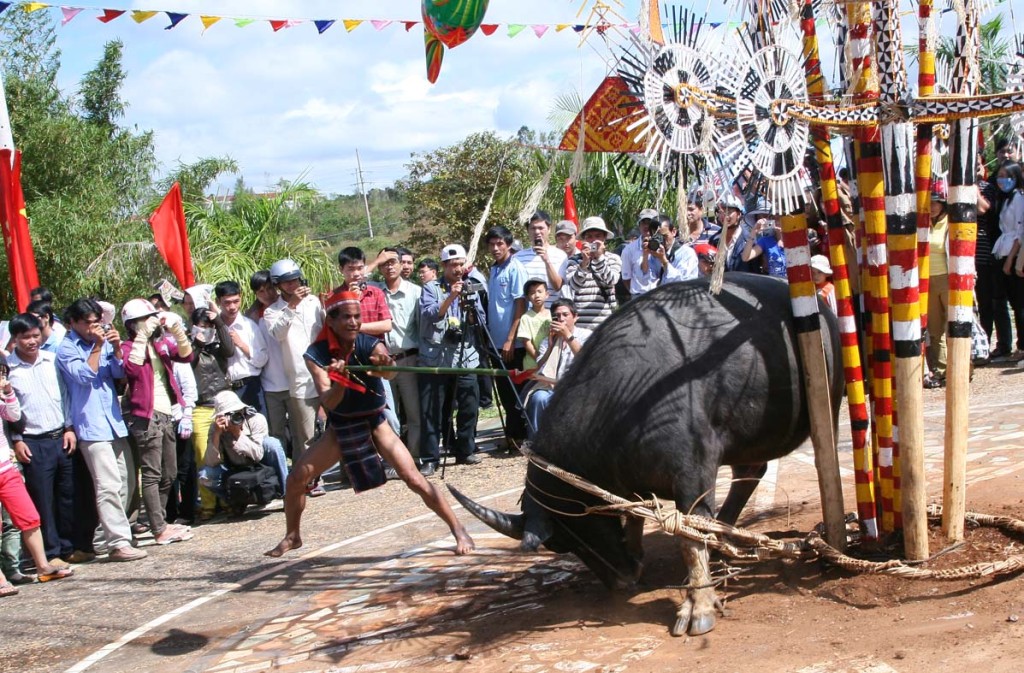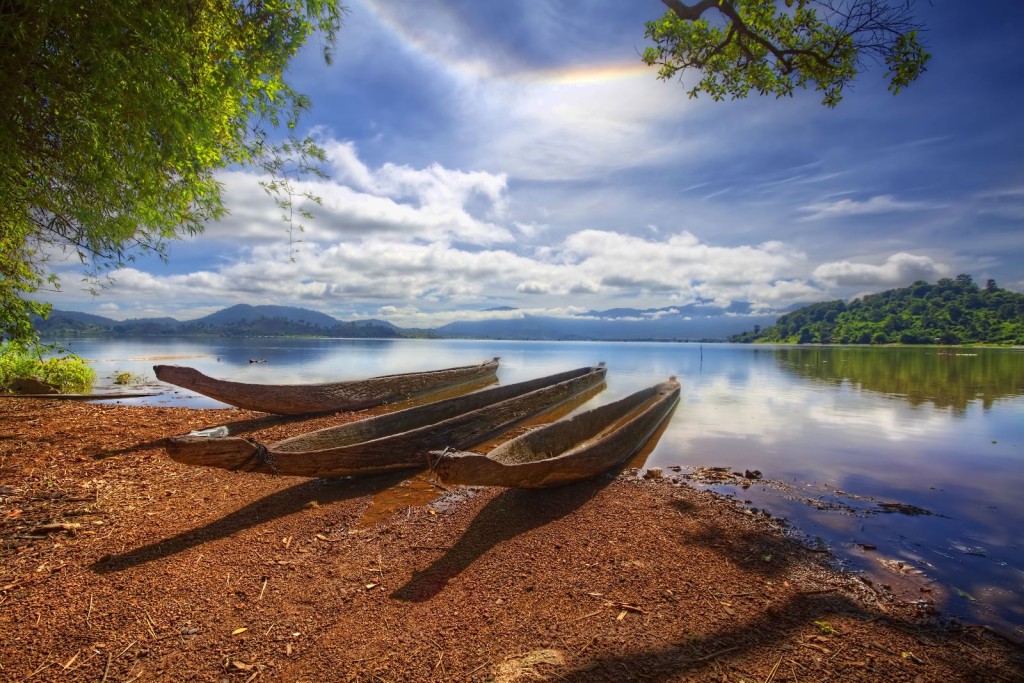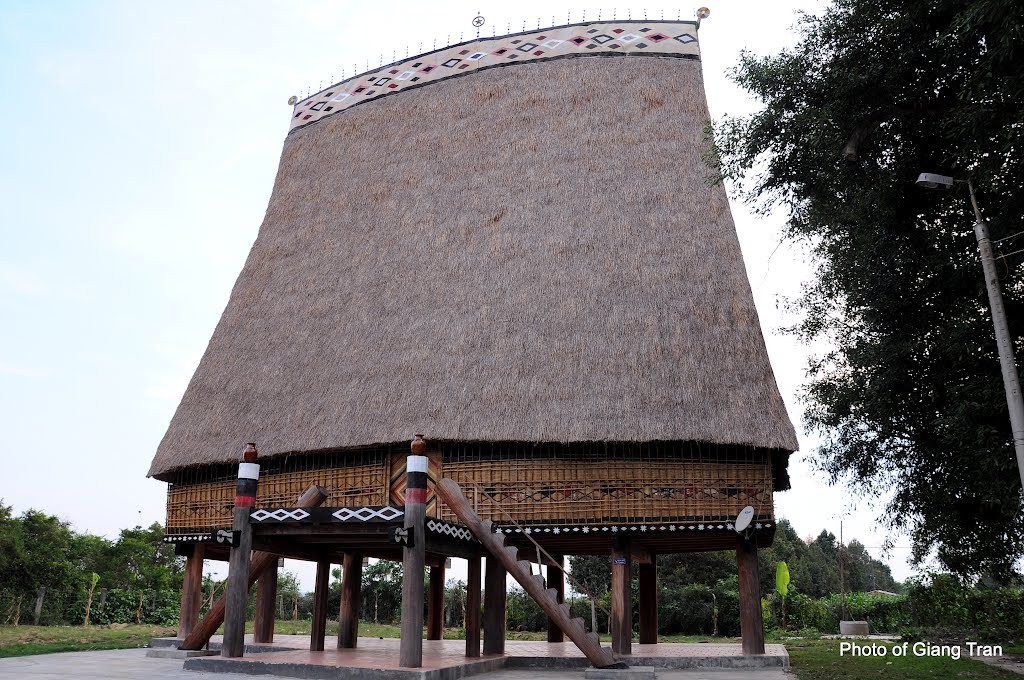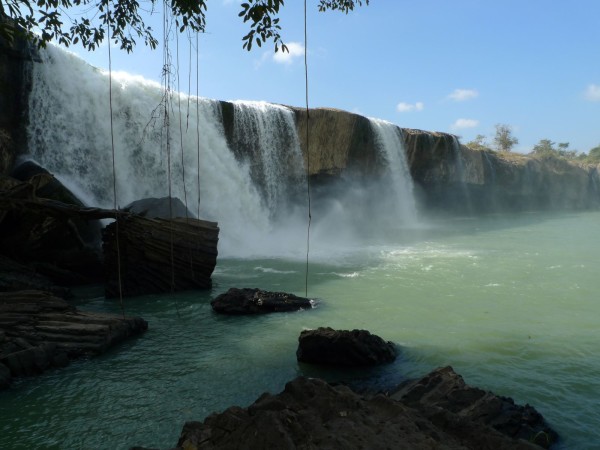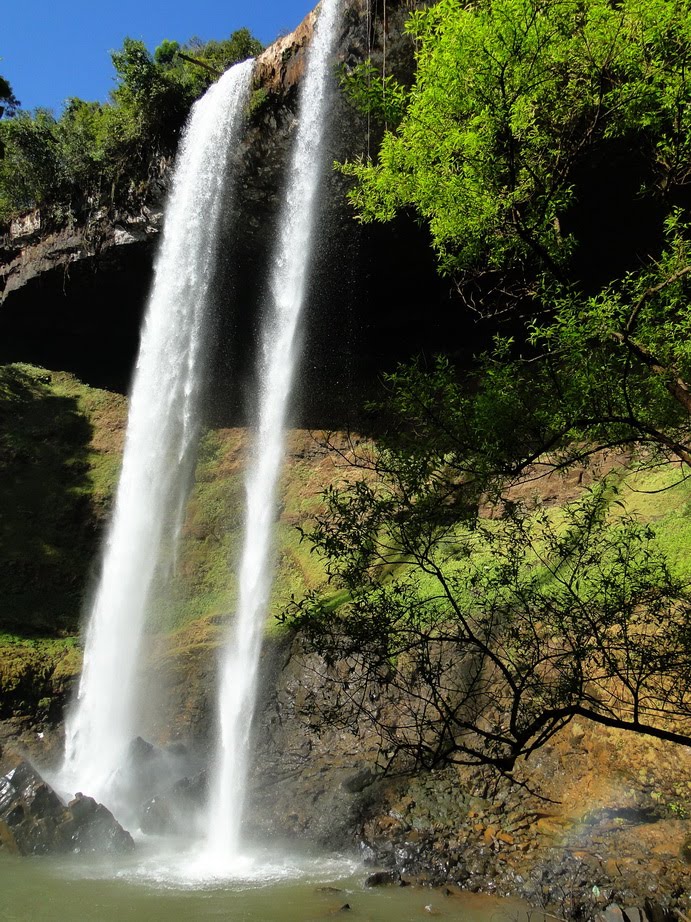Tay Nguyen is the Central Highlands of Vietnam, belonged to Truong Son Mountain Range. Tay Nguyen is always neglected by tourists except for only Da Lat city.
- Da Lat, Lam Dong
Da Lat is a tourism treasure of Central Highlands and Vietnam which has been long recognized and well developed. You can easily recognize the obvious western influence on the city’s architecture. The authentic and epic ethnic traits are still there but much less focused on. Da Lat is indeed very touristy and known for its cool weather, romantic atmosphere and stunning scenery of a 1500m above sea plateau.
Da Lat has so much to offer: from culture charms to natural wonders. This lovely city is suitable to visit all year round but you should visit from October to February when hundred species of flowers bloom in the city’s gardens. You can visit by train, bus and plane (to Lien Khuong airport). To get around the city, renting a motorbike is a very good option since the price per bike per day is only from 80,000VND to 120,000VND. The streets in Da Lat have no traffic lights so you should drive slowly and look around a lot.
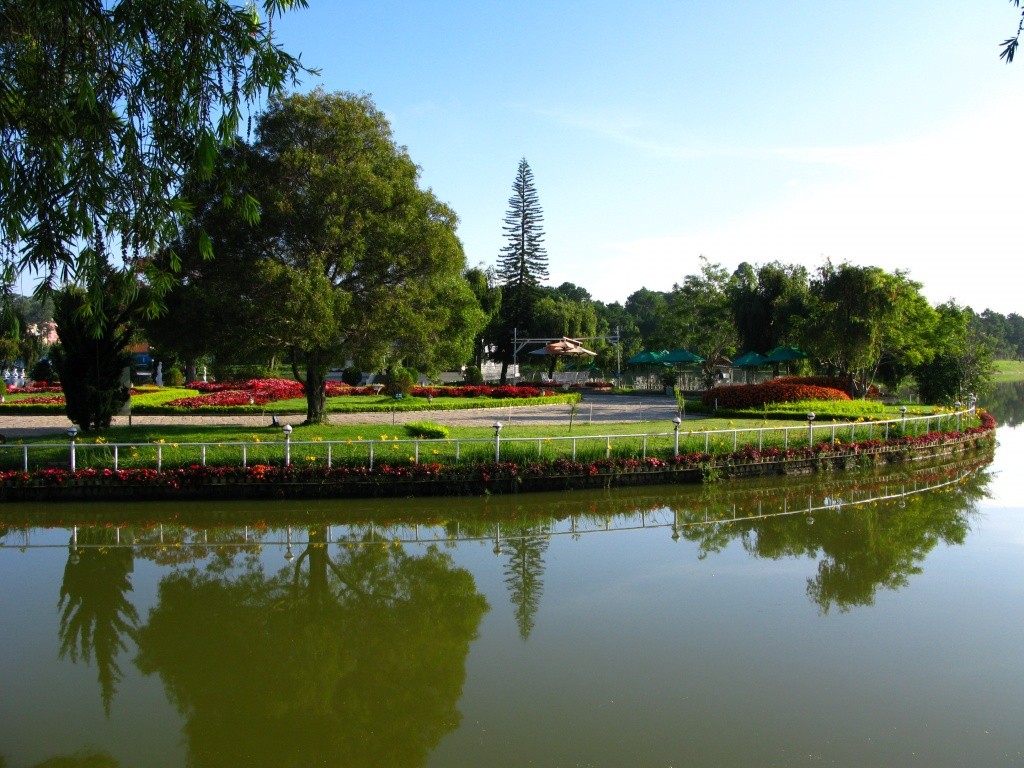
Come to Da Lat, you can’t miss some scenic sights of Xuan Huong Lake, Lang Biang mountain, Datanla Fall, Dreamy Hills and many more. The architectural constructions are also worth visiting, such as Truc Lam Zen institute, Bao Dai palace, Linh Phuoc pagoda…. The ones who are interested in culture and history can visit Tay Nguyen Institute of Biology to know more about the wild nature in Tay Nguyen.
The foods in Da Lat are also great and various. Da Lat has made name for fruits and vegetables because the weather here is so good to grow them. Strawberry ice cream and dried vegetable or vegetable salad are what you should try.
- Buffalo Stabbing Festival, Gia Lai
“Le Dam Trau” or Buffalo Stabbing Festival of Bana people in Gia Lai is very iconic and important in the spiritual life of people in Tay Nguyen. The festival is dedicated to village founders, ancestors worshipping, harvest celebration and other important events. The festival often takes place in front of Rong house (communal house of Bana people) or longhouse (as for Ede people). On the flat and vast ground, a high pole made of wood or bamboo, decorated with colourful banners, flags, flowers and leaves from the forest and rattles. A Langbiang buffalo will be washed clean and fed then tied to the pole by a loose rope around the neck. After thanking the gods and invite them to come down to eat buffalo meat and drink Can wine, the leader of the festival will let the people dance and sing and feast all night. On the next morning, the stabbing rite will officially start. The young men will use long spears to stab the buffalo while dancing and martial performing. The buffalo meat will be shared to all households of the village.
- Lak Lake, Daklak
Daklak province is named after the Lak lake which alone can qualify the importance of the lake to people life. The lake is the second-largest natural freshwater lake in Vietnam, only behind Ba Be Lake in the north. Lak lake is about 5km square, linked with Krong Ana river with its origin from Chu Yang Sin mountain. The lake’s scenery is a harmonization of lake, river and mountains and it’s even better if you can see the majestic sunset here.
The lake is about 56km away from Buon Ma Thuot city on the south through national highway 27. Around the lake, there are Le village and Jun village where you can see the traditional traits that still linger. Lak lake is famous for “thac lac” fish, so do not miss the chance to catch some. Near the lake, there lies the old mansion of King Bao Dai where you take in the panoramic view of Lak lake.
- The Rong House Kon K’lor, Kon Tum
The famous Rong house is located at the end of Tran Hung Dao street, near Dakbla river. A Rong house is a communal house of Bana people. The house is also one of the iconic cultural symbols of Central Highlands. And this is the must-see tourist site of Kon Tum that no tourist should miss out. The Rong house is built as a mark of the foundation of a Bana village; therefore, no doubt it’s important to all the villagers and they have to join to make the house. When the house is done, all visitors can see its huge roof from all directions. The total height of the house reached to 22 meters and two-thirds of it are of the roof. The whole house stands on 8 big wooden pillars made only from precious old trees. Its giant board axe blade shaped roof is made by dried yellow “gianh” leave, and hundreds of wooden bars to support the tremendous weight. For decoration, the Bana people use many motifs that referred to the God of Sun.
Near Kon K’lor Rong house is the famous suspension bridge Kon K’lor and the cultural village Kon K’tu. This is a perfect place where you can learn more about the culture of Bana people and join some activities here.
- Dray Nur waterfall, Daklak
This beautiful waterfall is 25 kilometres from Buon Ma Thuot city. Dray Nur is the partner waterfall with Dray Sap waterfall which is located not far away. According to the legend, the Dray Nur is the wife and Dray Sap is the husband. They are two of three waterfalls (the another is Gia Long waterfall) on the system of the legendary Seperok river – the longest river of Daklak.
The fall is famous for its scenic, romantic and peaceful sights. With a height of 30 meters, a width of 150 meters and 3000m square area of cave system right behind the cascade, Dray Nur is not only one of the most beautiful falls of Central Highlands but also a great site for those love adventure.
Dray Nur and Dray Sap have their own sad love story. Some even call it “Romeo and Juliet of Central Highlands”. The people here tell the story of a young couple who loved each other despite the conflict going on between their villages. Their fellow-men found out their secret affair and tried to separate them. Eventually, the young couple decided to jump into the river, leaving everything behind. The god above witnessed the tragic ending and raged at the villagers. He raised a fierce storm and split the river into two branches to separate the two villages forever. Ever since, the people named the two waterfalls as “wife” – Dray Nur and “husband” – Dray Sap.
- Trung Nguyen Coffee Village, Buon Ma Thuot City
Central Highlands is where you can find the best coffee in Vietnam. And Trung Nguyen Coffee Village is the epitome of Vietnamese coffee which offers you the best quality.
The village is located at Buon Ma Thuot city, Daklak, built by Mr Dang Nguyen Vu who is at the present the president of Trung Nguyen coffee. Opened for the first time in 2008, Trung Nguyen village has become not only the favourite place of any Vietnamese coffee lover but also a fine tourist site which represents the unique culture of Central Highlands.
There are 5 functional zones including the information desk, coffee, cuisine, museum and gift centre. The coffee zone has three old houses that are Cherry, Arabica and Robusta built with Hue architecture style. Trung Nguyen coffee brand is served here, with many kinds such as Weasel, Legendre, Creative, G7, Passion. Cuisine zone serves up to 50 Vietnamese traditional dishes.
Museum of Ethnology and World Coffee Museum are highlights of the village. The ancient artefacts of various ethnic minorities in Central Highlands are displayed in the former while over 10,000 artefacts of Burg Coffee Museum are collected at the latter. They will give an insight of the significance of coffee in the life of the residents of Tay Nguyen.
- Ako D’Hông village

In Ede language, Ako D’Hong means fountainhead. Indeed, the village was founded near where the biggest stream of Buon Ma Thuot Ea Nuoi and other 5 streams start. Ako D’Hong is believed the village that it had a part in the establishment of Buon Ma Thuot city as the wealthiest village of Tay Nguyen. Nowadays, Ako D’Hong is the only Ede village left that some of its traditions still can be seen. And only here you can see the longhouses of Ede people in real life. The people still maintain the guest greeting rites such as drinking Can wine or hit the gongs. Each longhouse used to have 2 entrance wooden stairs made from whole wood trunks, one for the guests and one for the family members. However, nowadays almost the stairs are replaced with concrete and iron and the new houses are always built behind the longhouses. The longhouses of Ako D’Hong village are where people hold regular festivals to perform the traditional music of Ede ethnic.
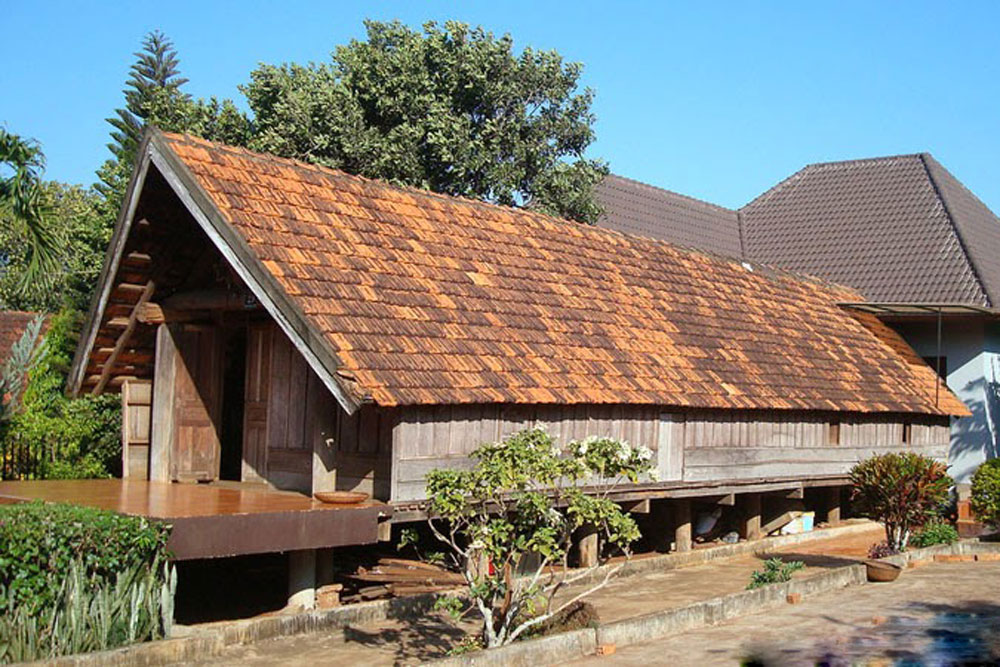
Tourists to Tay Nguyen shouldn’t miss this unique and charming village to know more about the traditional culture of the ethnics in Central Highlands. The village is located at the end of street Phan Chu Trinh, only 2km away from the city centre. There is a restaurant here serving some fine specialities of Tay Nguyen that you can try out.
- Ta Dung Lake, Dak Nong
Known as “Ha Long Bay of Tay Nguyen”, Ta Dung reserve is indeed a masterpiece of natural beauty. Ta Dung was previously a valley of Ta Dung mountain where Da Dang river flows through. A hydropower plant turns the whole valley into a lake making it look like a wonder of nature. Ta Dung lake is truly a green and blue colour feast for the eyes, especially stunning in sunny days.
From Gia Nghia town, you will have to drive straight on the national highway 28 towards Dak Glong district for about 100 kilometres to reach the lake. Situated on an altitude of 1000 meters above the sea, Ta Dung spread on an area of 26,000 hectares featuring many rare and precious trees and animals. Trek to higher ground to admire better the vast view of the lake, the islands on water, and the mountains in the background.
- Dak G’lun waterfall, Dak Nong
Dak G’lun waterfall is another masterpiece of Dak Nong province. Also from Gia Nghia town, it’s about 50 kilometres to reach this hidden gem of nature. The M’Nong people living in this area claim that the fall has been here for a thousand years and has many legends of its origin. To this day, the fall is still the favourite dating site of couples.
You will have to cross a small stream to get to see the fall which is covered by the thick canopies of old trees. The white water flow falls perfectly from a 50 meter large stone eaves onto a tiny blue lake below. In the rainy season, the waterfall would make a wonderful scene to witness.


